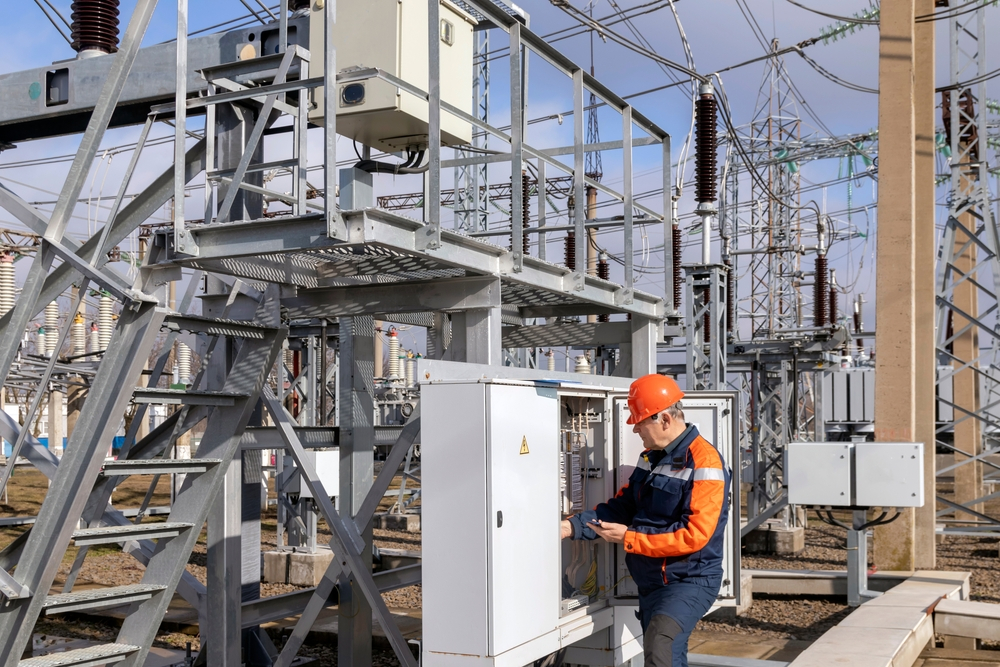Fascination About Roar Solutions
Wiki Article
Top Guidelines Of Roar Solutions
Table of ContentsThe Main Principles Of Roar Solutions Not known Facts About Roar SolutionsRoar Solutions for Dummies
In such an ambience a fire or explosion is feasible when 3 basic conditions are met. This is frequently described as the "dangerous location" or "combustion" triangular. In order to safeguard setups from a potential surge a technique of analysing and categorizing a possibly unsafe location is required. The purpose of this is to ensure the correct selection and installment of tools to eventually avoid a surge and to ensure security of life.
(https://www.bitchute.com/channel/JJyNq2gAk2M7)
No devices ought to be mounted where the surface temperature of the equipment is more than the ignition temperature level of the provided threat. Below are some typical dust harmful and their minimum ignition temperature level. Coal Dirt 380C 225C Polythene 420C (thaws) Methyl Cellulose 420C 320C Starch 460C 435C Flour 490C 340C Sugar 490C 460C Grain Dirt 510C 300C Phenolic Resin 530C > 450C Aluminium 590C > 450C PVC 700C > 450C Soot 810C 570C The possibility of the danger existing in a focus high enough to create an ignition will differ from location to location.
In order to identify this threat a setup is separated right into areas of danger relying on the quantity of time the dangerous is existing. These locations are described as Zones. For gases and vapours and dirts and fibers there are three zones. Zone 0 Area 20 A dangerous atmosphere is highly most likely to be existing and might exist for lengthy periods of time (> 1000 hours per year) or perhaps continually Zone 1 Zone 21 A hazardous ambience is feasible yet not likely to be existing for extended periods of time (> 10 450 C [842 F] A category of T6 means the minimum ignition temperature is > 85 C [185 F] Harmful area electrical tools maybe created for use in higher ambient temperatures. This would certainly showed on the rating plate e.g. EExe II C T3 Ta + 60C( This implies at 60C ambient T3 will certainly not be surpassed) T1 T1, T2, T3, T4, T5, T6 T2 T2, T3, T4, T5, T6 T3 T3, T4, T5, T6 T4 T4, T5, T6 T5 T5, T6 T6 T6 A T Course score of T1 suggests the optimum surface area temperature level produced by the tool at 40 C is 450 C. Presuming the linked T Course and Temperature rating for the equipment are appropriate for the location, you can constantly utilize an instrument with an extra stringent Division score than needed for the location. There isn't a clear solution to this question unfortunately. It truly does rely on the kind of equipment and what repairs need to be accomplished. Devices with specific examination procedures that can't be performed in the field in order to achieve/maintain 3rd party ranking. Should come back to the manufacturing facility if it is before the equipment's solution. Area Repair Work By Authorised Personnel: Difficult testing might not be needed however certain treatments might need to be adhered to in order for the tools to maintain its third event rating. Authorised workers should be used to carry out the work properly Repair work need to be a like for like substitute. New element need to be taken into consideration as a straight replacement calling for no special screening of the devices after the repair is full. Each tool with a dangerous score must be reviewed individually. These are described at a high level listed below, however, for even more detailed details, please refer straight to the guidelines.
The Best Strategy To Use For Roar Solutions
The devices register is an extensive database of tools documents that consists of a minimum collection of fields to determine each item's place, technological specifications, Ex-spouse classification, age, and ecological data. The proportion of Thorough to Shut inspections will certainly be established by the Tools Threat, which is examined based on ignition risk (the possibility of a source of ignition versus the chance of a combustible environment )and the dangerous area category( Zone 0Area 1, or 2). Carrying out a robust Risk-Based Examination( RBI official statement )strategy is crucial for ensuring compliance and security in managing Electric Equipment in Hazardous Areas( EEHA).
Roar Solutions - The Facts

In regards to explosive threat, a harmful location is a setting in which an explosive ambience is existing (or may be expected to be existing) in amounts that require unique precautions for the construction, installment and use tools. hazardous area electrical course. In this post we explore the difficulties dealt with in the office, the danger control steps, and the called for proficiencies to function securely
These compounds can, in specific problems, form eruptive atmospheres and these can have major and unfortunate consequences. Most of us are familiar with the fire triangle remove any type of one of the three aspects and the fire can not take place, but what does this mean in the context of hazardous areas?
In the majority of instances, we can do little about the levels of oxygen airborne, but we can have significant influence on sources of ignition, for instance electric tools. Hazardous locations are recorded on the unsafe location category illustration and are identified on-site by the triangular "EX LOVER" sign. Here, amongst other crucial details, areas are split right into 3 kinds relying on the danger, the chance and period that an explosive environment will certainly exist; Zone 0 or 20 is considered the most harmful and Zone 2 or 22 is regarded the least.
Report this wiki page